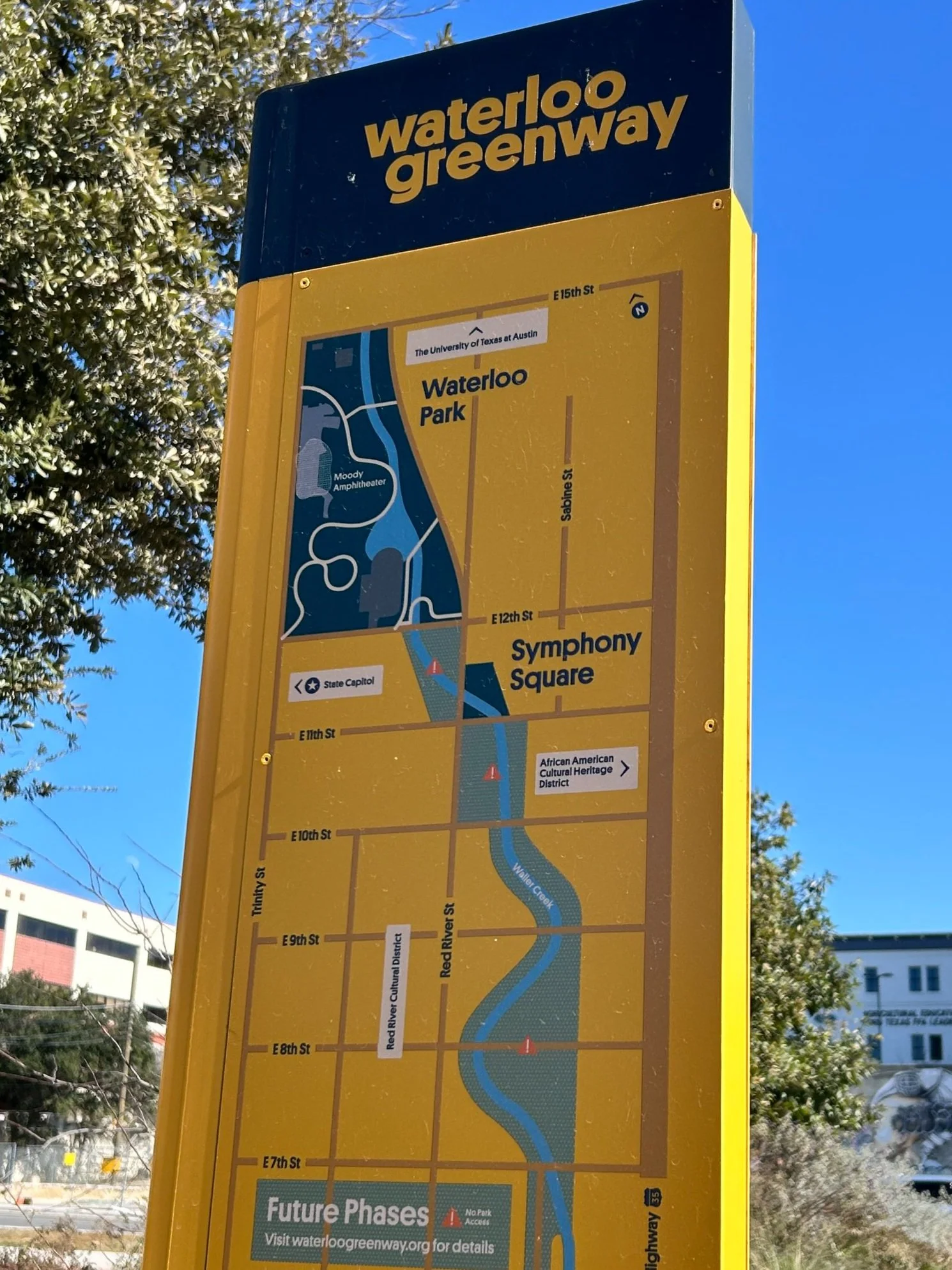An Afternoon at Waterloo Park, Part 1
One of our team resolutions this year is to go on monthly field trips. We have already generated a long list of gardens, museums, pretty neighborhoods, and state parks to visit. We chose Waterloo Park as our first stop. We couldn’t wait to get some fresh air, find inspiration, and see the extensive native landscaping in its wintry glory (winter gardens are some of my favorites!).
We had the place mostly to ourselves, since it was a weekday afternoon in January, and we were thrilled to wander the winding pathways, take in the gorgeously massed and layered plantings, and learn all about the Waller Creek ecosystem this park is designed to protect and enhance.
An informational sign for the park, showing the existing park and some of the future development phases.
About the Park
Waterloo Park marks the northernmost point in the Waterloo Greenway. Eventually, the Greenway will form a connected system of parks, trails, and green spaces that follow Waller Creek from the Capitol to Lady Bird Lake in downtown Austin. The park system addresses a number of priorities that are critical to maintaining and improving a sustainable ecosystem in Austin:
preserving and improving habitats for wildlife
controlling water flow and reducing flooding through the downtown area
increasing the amount of green space for local residents, workers, and visitors to enjoy
Developed in partnership between the City of Austin and the Waterloo Greenway Conservancy, the entire Greenway project will be implemented in a series of phases, starting with Waterloo Park, the Moody Amphitheater, and Symphony Square, which are all part of a completed Phase 1. Phase 2 is already under development.
Reconstructed creek walls
“Throughout Waterloo Greenway, we’re transforming lower Waller Creek from a piece of rundown infrastructure into a natural oasis — one that flows across city divides and leaves greater health and happiness for every Austinite in its gentle wake.”
The Creek
Polluted and prone to flooding, Waller Creek was formerly a deteriorating landmark that was increasingly a risk for flash flooding.
A 1-mile long stormwater tunnel and overflow catchment and control measures not only help the creek adapt to the changing landscape of downtown Austin but also protect the urban surroundings from flooding.
The creek beds have been reconstructed and strengthened with an underlying structure that allows for green growth on the surface. Systems like this allow for reduced runoff, minimal erosion, and provide habitat for the native species that live along the creek.
If you’d like to donate to the Waterloo Greenway Conservancy, click here!
Takeaway
This is especially interesting to me as a landscape designer in our area, because most of the clients we work with are struggling with drainage and erosion problems. While we don’t run into problems that require this level of construction, I’m eager to adapt some of the larger ideas from the Greenway in our residential projects.
Because we are designing living, changing environments, creating functioning ecosystems to solve problems is so important on every scale. They are adaptable and will grow to fit the specific needs of the site.
When we tackle our clients’ problem areas, we are thinking like this:
How can we resolve this problem for them in a long term way?
And then, how can we repair existing damage and create a versatile space that has utility far beyond what it had before?



